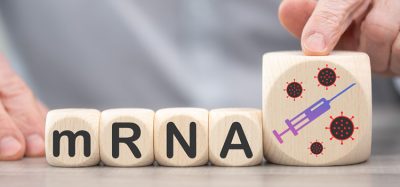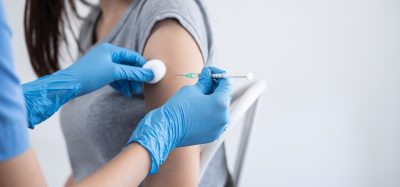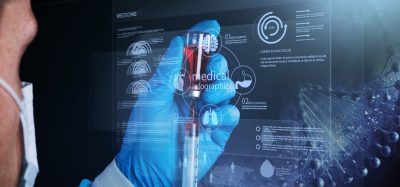Pre-clinical testing with in vitro model may streamline vaccine development
Posted: 20 November 2018 | Drug Target Review | No comments yet
A team of scientists have developed the first modelling system for testing age-specific human immune responses to vaccines — outside the body…


A team of scientists at Boston Children’s Hospital has developed the first modelling system for testing age-specific human immune responses to vaccines — outside the body. The practical, cost-effective new platform, using all human components, is expected to accelerate and de-risk the development, assessment and selection of vaccines.
The team directed by Dr Ofer Levy, describes a three-dimensional human tissue culture construct that is able to reproduce immune responses of different populations and age groups in a laboratory setting. The platform is designed to enable researchers to test, evaluate and select human vaccine candidates for age-specific target populations, such as newborns and the elderly, before initiating costly human or animal trials.
“By allowing us to select specific formulations based on individual characteristics, we can save time and money in the development of new, more effective vaccines,” says Dr Levy, “We believe this system could disrupt and galvanise the entire field of vaccinology and ultimately save lives.”
Immunisation is one of modern medicine’s greatest success stories. Yet we still lack vaccines for common diseases, such as HIV and respiratory syncytial virus — the number one cause of infant hospitalisation in the United States — while other vaccines, such as those against tuberculosis or pertussis, are only moderately effective. Moreover, the average vaccine can take a decade or more to develop, at a cost of hundreds of millions of dollars. The biggest stumbling block occurs late in development: Vaccines that worked flawlessly in mice regularly fail in clinical trials. Because of the high costs, many companies are reluctant to enter into vaccine development, despite the overwhelming need.
“It’s simply not possible to conduct large-scale, phase 3, double-blind, placebo-controlled studies of every potential vaccine for every pathogen we want to protect against,” says Dr Levy. “We need a way to rapidly assess the candidates earlier in the process.”
In 2010, Levy and his colleague Guzman Sanchez-Schmitz, MSc, Ph.D. received a grant from the Bill and Melinda Gates Foundation to create an in vitro model of the human immune system to test vaccines. It was a “man on the moon” effort, says Levy. The team set out to create a system that would not only faithfully replicate human biology but would also enable the study of targeted age groups.
“We were radically committed to being age-specific in our approach,” said Dr Levy. “Vaccines work differently in kids, and yet they are the group that needs the most protection.”
Infants and the elderly are most at risk from infection, suggesting broad age-based differences in immunity. And while infants receive the most vaccinations, many vaccines don’t provide sufficient protection initially, requiring multiple boosters to confer full immunity.
The team designed the construct to replicate a human capillary vein and interstitium — the fluid-filled spaces that line the circulatory system. It consists of a layer of endothelial cells, which typically line blood vessels, grown over a three-dimensional network of human proteins. To model the immune system of a newborn or an adult study participant, the researchers apply the participant’s plasma and immune cells known as monocytes to the surface of the construct.
The monocytes naturally migrate down through the endothelium into the human proteins below. During this process, many differentiate to dendritic cells, immune cells that initiate specific immune responses from T cells. After two days, these dendritic cells rise back through the endothelial layer, just as in the body they would pass through the walls of lymphatic capillaries en route to the lymph nodes.
When effective vaccines are added to this system, the emerging dendritic cells pick up the vaccine antigens. These cells are then harvested and cultured with T cells to gauge immune response to the vaccine.
“We relied on only human components, ensuring that the only thing that is not human-derived is the vaccine,” said Sanchez-Dr Schmitz, first author on the paper. “That’s what makes this platform powerful. You can detect small amounts of foreign material in a way that other systems cannot because you lower the threshold of background noise. Just as nature intended it.”
The team successfully validated the system using two commons, licensed neonatal vaccines: Bacillus Calmette-Guérin (BCG), a live-attenuated bacterium widely used to immunise against child tuberculosis, and hepatitis B vaccine (HBV), containing inactivated fragments of the pathogen coupled with alum, added to boost the immune response to the vaccine. “We started with vaccines that are recommended by the World Health Organization and given to newborns in resource-poor settings,” says Dr Levy. “If we were going to model responses by age, it made sense to choose vaccines that are given to newborns, such as BCG and HBV.”
The system will also enable researchers to model the immune systems of other vulnerable populations, such as pregnant women, the elderly or the chronically ill, and open the door to testing individual responses.
“This construct is highly versatile. It can be newborn if you use newborn cells and plasma. It can be your own cells and plasma. That’s how personalized this system can be,” says Dr Sanchez-Schmitz.
The system marks a major advancement for Boston Children’s Precision Vaccines Program, which was founded to bring precision medicine principles to vaccinology and catalyze collaboration between academia, government and industry, with the goal of accelerating vaccine development for vulnerable populations.
“Our in vitro systems are part of a larger precision vaccines paradigm that also includes special adjuvant systems to boost immune responses in distinct populations, targeted clinical trials, systems biology and animal modelling,” says Dr Levy. “This is an opportunity to bring molecular biology and innovative immunology to human settings, and to do science that not only is sophisticated but has a real chance in the near term to enhance human health.”
The study has been published in Frontiers in Immunology.
Related topics
Vaccine
Related organisations
Boston Children's Hospital
Related people
Guzman Sanchez-Schmitz, Ofer Levy







